Sports
Magic happens when kids and adults learn to swim. Tragedy can strike if they don't.
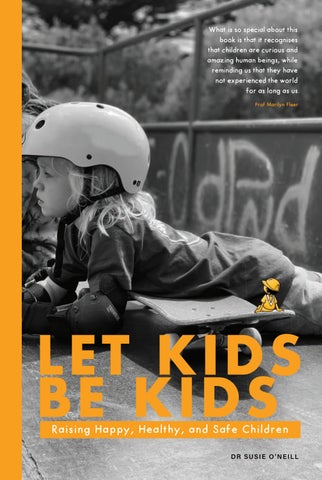

At a swim meet just outside St. Louis, heads turned when a team of young swimmers walked through the rec center with their parents in tow.
A supportive mom kept her eye on the clock while the Makos Swim Team athletes tucked their natural curls, braids, and locs into yellow swimming caps. In the bleachers, spectators whispered about the team’s presence at the pool in Centralia, Illinois — as they do at almost every competition.
“They don’t know that we’re listening,” Randella Randell, a swimmer’s mom, later said. “But we’re here to stay. We’re here to represent. We’re going to show you that Black kids know how to swim. We swim, too.”
Randell’s son, Elijah Gilliam, 14, is a member of the Makos’ competitive YMCA and USA Swimming program based in North St. Louis. Almost 40 athletes, ages 4 to 19, swim on the squad, which encourages Black and multiracial kids to participate in the sport. Coached by Terea Goodwin and Torrie Preciado, the team also spreads the word about water safety in their community.
“If we can get everybody to learn how to swim, just that little bit, it would save so many lives,” said Goodwin, a kitchen and bathroom designer by day who is known as Coach T at the pool. “Swimming is life.”
But just like mako sharks, such teams of Black swimmers are rare. Detroit has the Razor Aquatics, Howard University in Washington, D.C., has a team that’s made headlines for winning championships, and some alums from North Carolina A&T’s former swim team created a group to offer water safety classes.
In the past, Black Americans were barred from many public swimming pools. When racial segregation was officially banned, white Americans established private swim clubs that required members to pay a fee that wasn’t always affordable. As a result, swimming remained effectively segregated, and many Black Americans stayed away from pools.
The impact is still felt. More than a third of Black adults report they do not know how to swim, according to Centers for Disease Control and Prevention statistics, more than twice the rate for adults overall.
Seeing a need in their community, the parents of the Makos swimmers formed the Black Swimmers Alliance at the end of 2023 with a goal of “bridging the gap in aquatic skills,” according to its website. But the group, which offers swim lessons to families of color, is concerned about the flow of grant money dwindling because of the recent federal backlash against diversity, equity, and inclusion programs. Even so, they are fundraising directly on their own, because lives are being lost.
In late January, a 6-year-old died at a hotel pool in St. Louis. A boy the same age drowned while taking swim lessons at a St. Louis County pool in 2022. And across the river in Hamel, Illinois, a 3-year-old boy drowned in a backyard pool last summer.
Drowning is the leading cause of death for children ages 1 through 4, according to the CDC. Black children and Black adults drown far more often than their white peers.
Members of the Black Swimmers Alliance discussed those statistics before their advocacy work began. They also had to address another issue — many of the adult volunteers and parents with children on the Makos team didn’t know how to swim. Even though their children were swimming competitively, the fear of drowning and the repercussions of history had kept the parents out of the pool.
The Makos athletes also noticed that their parents were timid around water. That’s when their roles reversed. The children started to look out for the grown-ups.
Joseph Johnson, now 14, called out his mom, Connie Johnson, when she tried to give him a few tips about how to improve his performance.
“He was like, ‘Mom, you have no idea,'” the now-55-year-old recalled. “At first, I was offended, but he was absolutely right. I didn’t know how to swim.”
She signed up for lessons with Coach T.
Najma Nasiruddin-Crump and her husband, Joshua Crump, signed up, too. His daughter Kaia Collins-Crump, now 14, had told them she wanted to join the Makos team the first time she saw it. But among the three of them, no one knew how to swim.
Joshua Crump, 38, said he initially felt silly at the lessons, then started to get the hang of it.
“I don’t swim well enough to beat any of the children in a race,” he said with a chuckle.
Nasiruddin-Crump, 33, said she was terrified the first time she jumped in the deep end. “It is the only moment in my life outside of birthing my children that I’ve been afraid of something,” she said. “But once you do it, it’s freedom. It’s pure freedom.”
Mahoganny Richardson, whose daughter Ava is on the team, volunteered to teach more Makos parents how to swim.
She said the work starts outside the pool with a conversation about a person’s experiences with water. She has heard stories about adults who were pushed into pools, then told to sink or swim. Black women were often told to stay out of the water to maintain hairstyles that would swell if their hair got wet.
Bradlin Jacob-Simms, 47, decided to learn how to swim almost 20 years after her family survived Hurricane Katrina. She evacuated the day before the storm hit but said one of her friends survived only because that woman’s brother was able to swim to find help.
“If it wasn’t for him, they would have died,” she said, noting that hundreds did drown.
“That’s the reason why swimming is important to me,” she said. “A lot of times, us as African Americans, we shy away from it. It’s not really in our schools. It’s not really pushed.”
Makos swimmer Rocket McDonald, 13, encouraged his mom, Jamie McDonald, to get back into the water and stick with it. When she was a child, her parents had signed her up for swim lessons, but she never got the hang of it. Her dad was always leery of the water. McDonald didn’t understand why until she read about a race riot at a pool not far from where her dad grew up that happened after St. Louis desegregated public pools in 1949.
“It was a full-circle moment,” McDonald said. “It all makes sense now.”
Now, at 42, McDonald is learning to swim again.
Safety is always a priority for the Makos team. Coach T makes the athletes practice swimming in full clothing as a survival skill.
Years ago, as a lifeguard in Kansas City, Missouri, Coach T pulled dozens of children out of recreational swimming pools who were drowning. Most of them, she said, were Black children who came to cool off but didn’t know how to swim.
“I was literally jumping in daily, probably hourly, getting kids out of every section,” Goodwin said. After repeated rescues, too many to count, she decided to offer lessons.
Swim lessons can be costly. The Black Swimmers Alliance aimed to fund 1,000 free swim lessons by the end of 2025. It had already funded 150 lessons in St. Louis. But when the group looked for grants, the alliance scaled back its goal to 500 lessons, out of caution about what funding would be available.
It’s still committed to helping Black athletes swim competitively throughout their school years and in college.
Most of the time, the Makos swimmers practice in a YMCA pool that doesn’t have starting blocks. Backstroke flags are held in place with fishing wire, and the assistant coach’s husband, José Preciado, used his 3-D printer to make red, regulation 15-meter markers for the team. Once a week, parents drive the team to a different YMCA pool that has starting blocks. That pool is about 5 degrees warmer for its senior patrons’ comfort. Sometimes the young swimmers fuss about the heat, but practicing there helps them prepare for meets.
Parents said white officials have frequently disqualified Makos swimmers. So some of the team parents studied the rules of the sport, and eventually four became officials to diversify the ranks and ensure all swimmers are treated fairly. Still, parents said, that hasn’t stopped occasional racist comments from bystanders and other swimmers at meets.
“Some didn’t think we’d make it this far, not because of who we are but where we’re from,” Goodwin has taught the Makos swimmers to recite. “So we have to show them.”
And this spring, Richardson is offering lessons for Makos parents while their children practice.
“It’s not just about swimming,” Richardson said. “It’s about overcoming something that once felt impossible.”
|
|
KFF Health News
Sports
Barrera sets school mark, Champagnie wins triple jump in first indoor meet
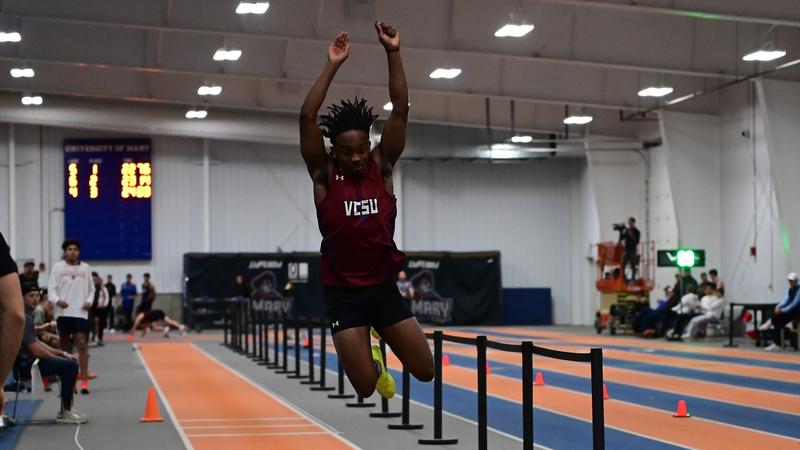
BISMARCK, N.D. – The Valley City State Track and Field teams were in Bismarck to begin the Indoor season at the Mike Thorson Open. Freshman Frida Barrera set the school record in the mile and junior Cameron Champagnie won the triple jump.
All totaled, Valley City State had 30 top eight finishes. The Men placed fourth as a team with 91 points. The Women placed third with 59 points.
For the men, in the field events, Champagnie won the triple jump with a jump of 13.58 meters. Zeke Barnick was second in the high jump with a jump of 1.90 Meters. In the long jump, the Vikings took four of the top eight spots. Aaron Cutshall (4th), Porter Granger (5th), Jeffry Rosinski (6th), and Makana Taylor (8th) all picked up points for VCSU. Zac Kuznia was fifth in the shot put and Arie Bratrud was sixth in the weight throw.
In the track events, Jordan Mount was second in the 400m, and Zach Baumgartner was second in the mile run. Titus Dolo was fourth in the 60m and seventh in the 200m. Tate Minnihan and Mason Brehmer finished third and fourth respectively in the mile. Gage Gunther was third in the 800m while Parker Jacobson was fifth in the 60m. In relay’s, the team of Brock Norton, Jeffry Rosinski, Zeke Barnick, and Jordan Mount took third in the 4×400.
On the women’s side, the Vikings were led by Barrera whose 5:21.61 time in the mile set the record that was set last season by Jasmine Barnes. Barrera beat the record by 4.67 seconds. She also took second in the 800m with a time of 2:26.69 which is the second fastest 800 in school history. Billie Maye Pohlkamp was third in the 800m. In the 200m, Ava Krier was sixth and Jonica Taylor was seventh.
In field events, Grace Backstrom and Emma Muggli were second and third respectively, Caitlyn Armbrust was fourth in the triple jump. Carlee Fuchs was third in the weight throw with Megan Lahtonen taking seventh. Kiana Hilary was sixth in the shot put with Rebecca Bohrer right behind in seventh.
Live results can be found here.
NEXT UP: The Vikings will be at the Bison Alumni Classic in Fargo on Thursday, December 11th.
Sports
Falcons Win Two Races at Season Opening Suffolk Relays
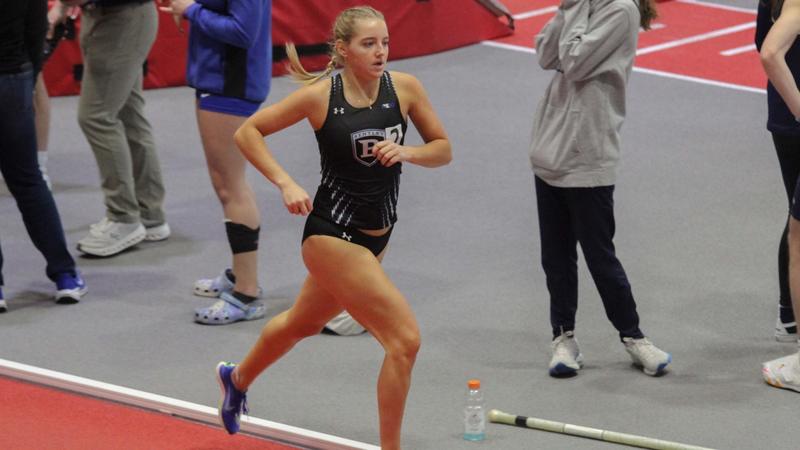
BOSTON, Mass. – Samantha Doran and Hannah Croteau won races for Bentley women’s track and field at the team’s first indoor meet of the season at the Suffolk Relays.
Doran, who competed at the NCAA Cross Country Championships two weeks ago, won the 5000 meter race by more than 26 seconds with a time of 18:41.30.
Croteau won the 60 meter hurdles in 9.58
The one mile saw Bentley runners finish second and third. Lily Tedford, who also competed at the NCAA Cross Country Championships, was second (5:09.34) and Amelia Luetjen was third (5:36.20).
Molly Capece was third in the 3000 meter (10:45.56).
In the field events, Mia Bonner was third in the triple jump.
Sports
Devils Win SU Holiday Open for Third Straight Year
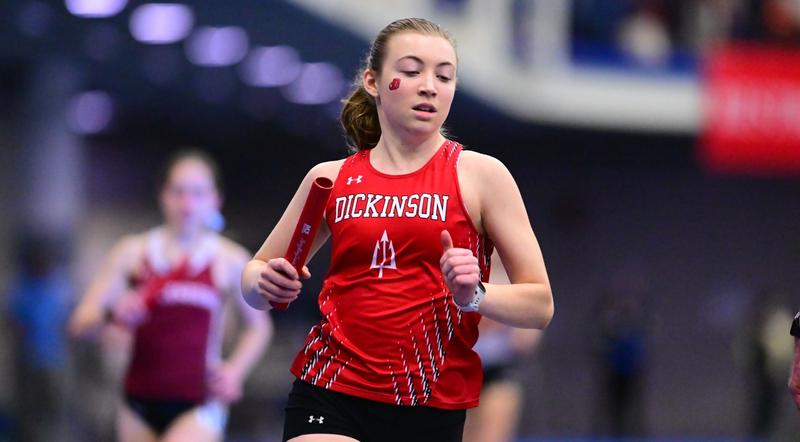
WINCHESTER, Va. – For the third straight season the Dickinson women’s indoor track and field team opened up their season by winning the Shenandoah University Holiday Kickoff Open inside the James Wilkins Jr. Athletics and Events Center.
Sprints
Erin Olsavsky finished off the Top-5 for the 60m dash with a time of 8.07. Angie Braun also earned a Top-10 slot clocking in at 8.18 for ninth. When hurdles were put in front of the athletes Sylvie McMaken-Marsh nabbed sixth by hitting the line in 10.63. Allison Edmands and Melina Gregory claimed ninth (11.16) and tenth (11.18) respectively.
Three Devils got inside the Top-10 during the 200m as Olsavsky won the event in 26.04, followed by Emily Chaine in eighth (28.55) and Gregory in tenth (29.08). McMaken-Marsh just missed the Top-10 claiming eleventh at 30.14.
Chaine just missed the podium for the 400m as her time of 1:06.37 was good for fourth.
Distance
The 800m was only made up of Dickinson runners with Sophia Kovalski winning the race in 2:27.33, while Lauren Scott (2:43.08), Margaret Randolph (2:59.95) and Leah Bell (3:01.77) took up spots two through four.
Meghan Higgins-Haas rounded out the Top-3 for the 5000m by hitting the stripe in 18:48.14. The group of Breanna Franchak (5th – 19:52.05), Ellie Drescher (7th – 21:48.86), Jenna Kerns (8th – 21:49.49), Emma VanMeter (9th – 21:49.63) and Emma Lewis (10th – 22:23.36) had a great showing all finishing inside the Top-10.
Bell was the lone Devil to compete during the mile run earning an eighth-place result with a time of 6:42.03.
Relays
Dickinson put two teams forward for the 4x400m with the team of Gregory, Olsavsky, Randolph and Scott claiming the victory with a time of 4:41.66, while the group with Chaine, Drescher, Franchak and Kovalski falling just off the pace of their teammates grabbing second at 4:45.82.
Field
McMaken-Marsh collecting second-place during the pole vault by clearing 2.45m.
Another Dickinson victory came in the high jump when Amanda Hoglund eclipsed 1.48m, followed by Edmands in sixth (1.30m). Braun earned seventh for the long jump with a mark of 4.59m, while in the triple jump Braun and Hoglund took up seventh (9.52m) and eighth (9.51m) respectively.
Two Devils took part in the weight throw with Sarah Glickson just missing the podium landing in fourth with a mark of 13.45m. Anna Purvis gave a good showing in her first meet taking 15th at 9.29m. Glickson collected sixth for the shot put by dropping down at 9.65m, followed by Purvis (12th – 7.36m), Hoglund (13th – 7.13m) and Edmands (15th – 5.84m).
Up Next
Dickinson will next compete after the New Year holiday when they take part in the Moravian University Indoor Meet in Bethlehem, Pennsylvania on Saturday, January 17th beginning at 10am.
Sports
Lehman Wins Two Events in Season Opener
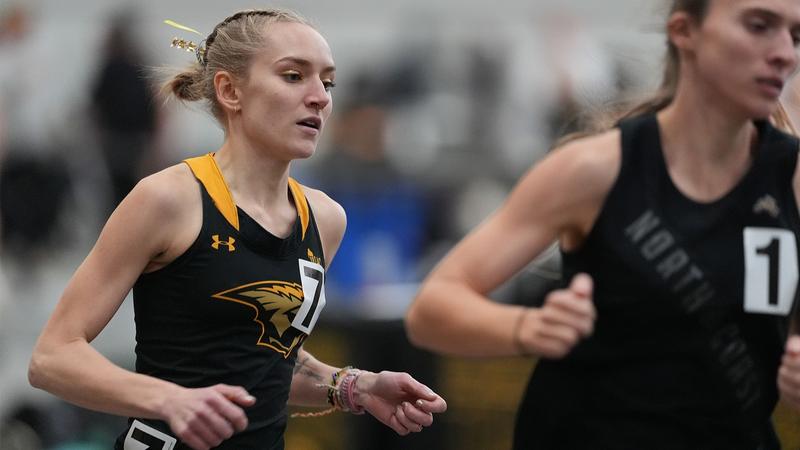
OSHKOSH, Wis.- The UW-Oshkosh women’s track & field team kicked off its season on Saturday (Dec. 6) by hosting the annual Early Bird Invitational/Multi at Kolf Sports Center. In the non-scoring meet, the Titans won six events.
The pentathlon kicked off the season for the Titans on Friday night and was highlighted by a second-place finish by Halle Meyer (Kiel/Kiel), who scored 3,096 points.
The Titans started off strong in Saturday’s full day of events as Ella Kojis (Dousman/Waukesha South) won the 3,000-meter run in 10:52.79.
The Titans grabbed two more medals in the 400-meter dash, with Addie Baker (Delavan/Elkhorn Area) finishing second in 59.23 seconds and Maddy LaVoi (Ankeny, Iowa/Ankeny Centennial) finishing third at 59.30.
Amelia Lehman (Oshkosh/Valley Christian) kicked off her season in the mile run. The two-time All-American won the event with a personal record of 4:46.50. Freshman Lehna Mitchell (Oshkosh/Oshkosh North) took third in the event in 5:09.08.
Lehman came back to win her second event of the day in the 800-meter run in 2:20.06. Adriana Garcia (Green Bay/Green Bay East) and Anabel Mitchell (Oshkosh/Oshkosh North) rounded out the events’ top three with Garcia finishing in 2:23.45 and Mitchell finishing in 2:27.24. The Titans swept each of the top-five positions in the event.
Addie Baker (Delavan/Elkhorn Area) won the 200-meter dash, finishing in a time of 25.80 seconds. Mia Riley (Janesville/Janesville Parker) grabbed third in the event with a time of 26.52 seconds in her first collegiate meet.
In the 5,000-meter run, Jamie Catania (Fond du Lac/Horace Mann) picked up second-place with a time of 18:17.55.
The team of Anabel Mitchell (Oshkosh/Oshkosh North), Lehna Mitchell (Oshkosh/Oshkosh North), Garcia, and Megan Hoffman (Clayton/Clayton) placed third in the 4×400 meter relay with a 4:14.27 finish.
The Titans picked up two medals in the weight throw. Kaelyn Bilello (Menomonee Falls/Menomonee Falls) took second with a throw of 15.64 meters and Abi Masloroff (Franklin/Franklin) finished third with a 15.25-meter mark.
Brooklyn Manz (Kiel/Kiel) won the shot put with a throw of 12.98 meters.
Haley Kanitz (Menomonee Falls/Menomonee Falls) tied for first in the pole vault with a vault of 3.36 meters.
The Titans return to the track in 2026 as they host the Alumni & Friends Invitational on Saturday, January 17 at Kolf Sports Center.
Sports
Thomas Crushes 5k School Record In Season Opener
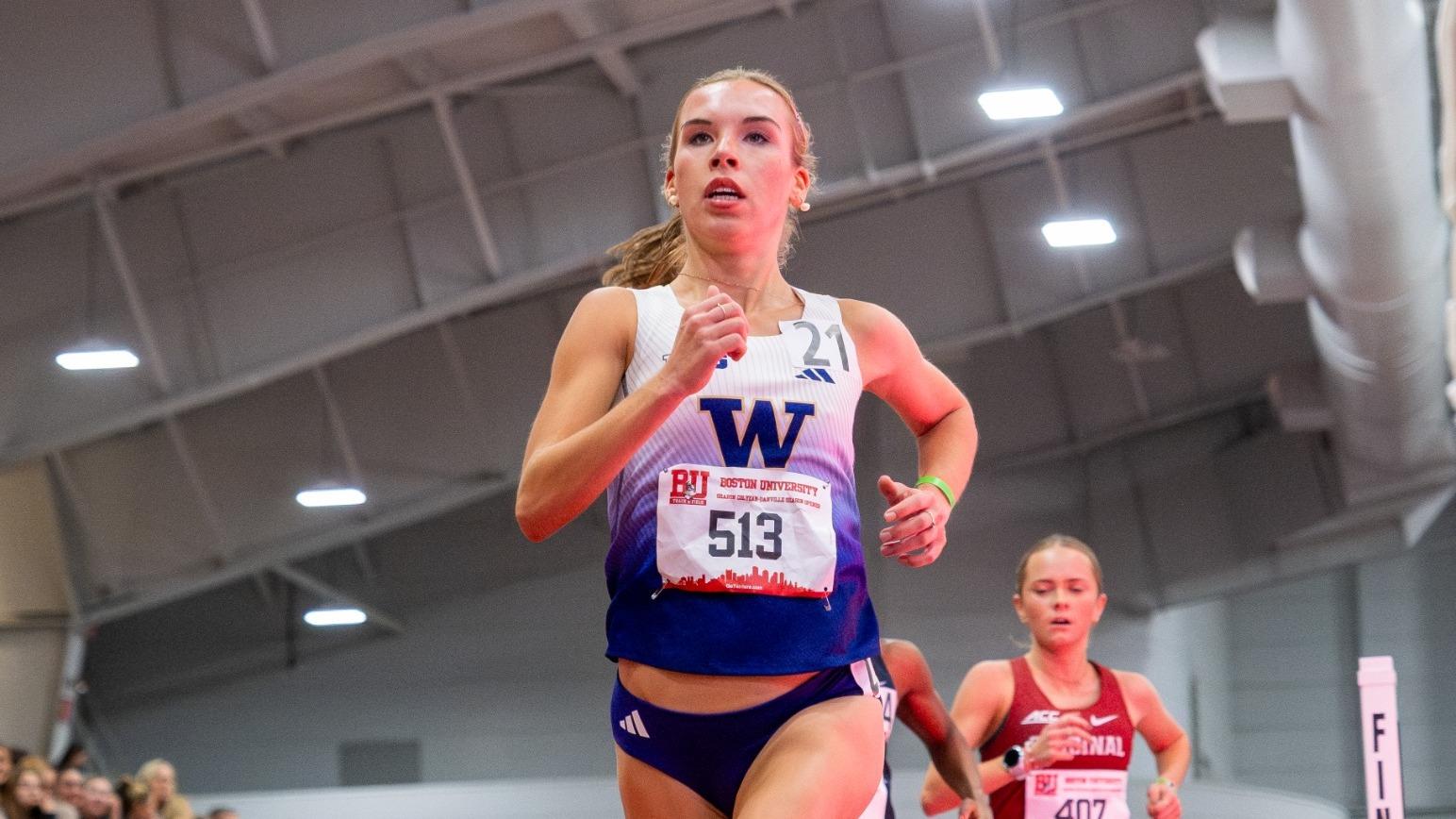
The big UW highlight out of many at today’s Sharon Colyear-Danville Season Opener was new Dawg Chloe Thomas shattering the School Record in the 5,000-meters. Thomas, an All-American transfer from UConn, just last week took runner-up honors at the Canadian Cross Country National Championships, and she carried that momentum onto the track today with a PR time of 15:16.93.
That broke the Husky indoor 5k record by a massive 22 seconds. Haley Herberg set the prior record of 15:38.37 in 2024. Thomas’ time was also faster than the UW outdoor record of 15:22.81 set just last season by Amina Maatoug.
In a later 5k heat, Julia David-Smith dropped a 10-second indoor PR to jump up to No. 4 in school history behind just Thomas, Herberg, and Izzi Batt-Doyle. David-Smith ran 15:45.01 today in her first track race since July.
Another new Husky went out and broke a national record on day one. Freshman Chloe Symon, a Vancouver, B.C. native, knocked off a Canadian U20 indoor record that had stood since 1988. Symon ran 2:04.56 to take fourth in the 800-meters and set the new record. It also puts her up to No. 7 in Husky indoor history just one race into her career.
There was a third Chloe thriving today for the women’s team, as All-American Chloe Foerster ran the fastest 3,000-meters time of her career, going 8:56.22. That puts Foerster up to No. 3 in school history indoors.
First-year Dawg Jenica Swartz dropped an impressive mile season opener, taking fourth in the elite section in 4:35.67, just a second off the top-10 list. Mia Cochran, coming off leading the squad at NCAA XC two weeks back, opened her track season in the 3k with a time of 9:16.54.
For the men’s team, all six Huskies on the trip were focusing on the 3,000-meters. The top time came from transfer Reuben Reina, who went straight to No. 4 in school history with a run of 7:43.16.
Two more Husky men opened up with sub-8-minute runs. Tyler Bilyard, making his Husky debut, ran 7:55.80 for a PR, and redshirt freshman Nathan Neil came across in 7:57.01. True freshman Josiah Tostenson opened up with a 8:03.31 and Thom Diamond clocked a time of 8:16.62. Freshman Owen Powell also raced today but served as a pace-setter in the 3k.
Next week will see many of the Husky jumpers, vaulters and sprinters get an early season test at the Spokane Invitational, on Saturday, Dec. 13. Then it’s a month-long break from competition for the end of the quarter and the holidays before the Dempsey
Sports
Cal Poly Volleyball topples No. 4 seed USC, advance to third round of NCAA Tournament for the first time in 18 years
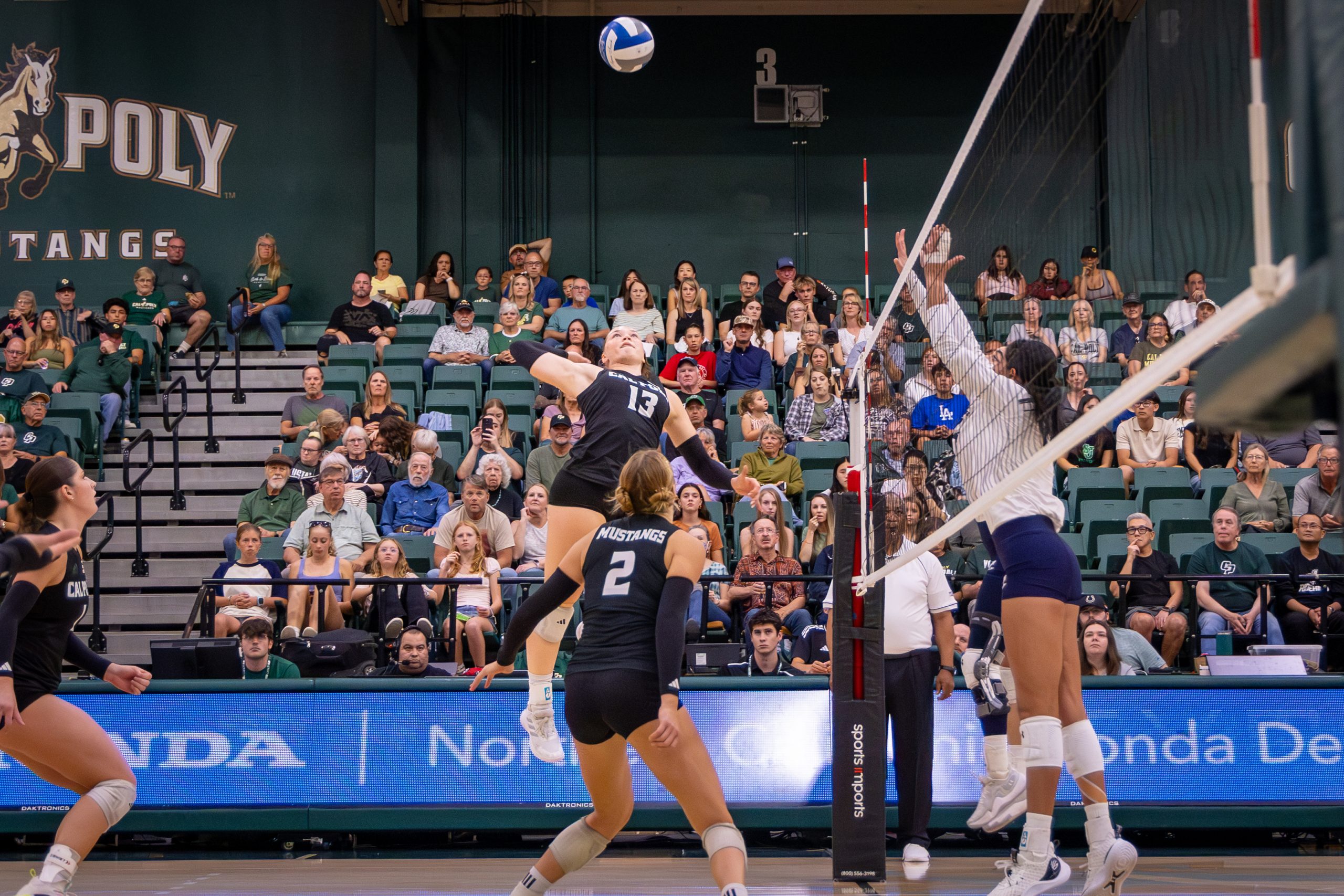
For the first time since 2007, Cal Poly Volleyball is advancing to the third round of the NCAA Women’s Volleyball Tournament, after upsetting No. 4 seed USC in a five-set match on Friday.
With the 3-2 win, they claimed a spot in the top 16, also known as the “Sweet Sixteen,” and destroyed any remaining perfect tournament brackets in ESPN’s bracket prediction challenge.
“That was an incredible performance by a group of people that love one another, that love this game and that have committed to something bigger than themselves,” head coach Caroline Walters said.
The Mustangs have not faced the Trojans since 2012, where they lost in a 3-0 sweep. Ranking at No. 13 in the country and beating three ranked teams throughout the season, USC was favored in Friday’s match. Just like in Thursday’s upset win over BYU, Cal Poly defied the odds once again, ending the Trojan’s season.
READ MORE: Cal Poly Volleyball upsets BYU to advance to second round of NCAA Tournament
The Mustangs started the match hot, winning the first two sets 25-19 and 25-20. With a shot at a sweep, the momentum was not enough as they fell to the Women of Troy in set three with a score 25-20, and again took a 25-14 loss in the fourth set, recording their worst offensive performance of the night with a hitting percentage of .079%.
“I just kept saying to everyone, and I knew everyone else was saying it or thinking it in their heads, but we’re here for a reason,” redshirt senior setter Emme Bullis said. “We’re going to the fifth set for a reason.”
Despite the back to back losses, the Mustangs came up big in set five, mirroring sets one and two and dominating USC 15-7 to send themselves to the next round of the tournament.
“I am in awe of my team,” Walters said.
Fredrick and Beshear lead the charge
Two standout players for the Mustangs throughout the entirety of the season have been junior outside hitter Emma Fredrick and sophomore outside hitter Kendall Beshear. Through the first two rounds of the NCAA tournament their dominance has only increased.
In Friday’s match both achieved double-doubles with Fredrick leading both the offense and defense with 17 kills and 17 digs, while Beshear notched 12 kills and 14 digs.
During the season, Beshear led the Big West Conference with 52 service aces followed by Fredrick in the No. 3 spot with 37. The pair combined for three out of Cal Poly’s eight total service aces against USC.
“Being able to go back there and knowing that I have the support of everyone around me to just go be free and be smiley and take a rip out of the ball … that’s what gives me the confidence to do what I can do,” Beshear said.
Dominant on defense
With a player earning a new career high in blocks and four players entering the double digits in digs, Cal Poly’s defense worked like a charm in helping them secure the upset win.
Freshman middle blocker Charlotte Kelly was a force to be reckoned with at the net as she notched seven blocks, a career high and accounted for over half of Cal Poly’s blocks. Kelly is getting her first ever tournament action this season after she was moved up to the starting rotation when redshirt middle blocker Breklyn Pulling faced a season-ending injury over the summer.
“I think Charlotte Kelly is the unsung hero of this group,” Walters said. “Her coming in as a true freshman and doing what she does is insane,”

Following closely behind Fredrick in defensive statistics, sophomore libero Elif Hurriyet claimed the second defensive spot in tonight’s match as she brought in 16 digs.
Racking in 71 digs and 10 blocks, the Mustangs were able to hold the Trojans at an overall hitting percentage of .237%, just under their season.
The Mustangs are up for a challenge as they will head to Kentucky to face No.1 seed University of Kentucky in the regional semifinals on Dec. 11 at 12:30 p.m.
The Wildcats are on a 24 game winning streak and have an overall record of 27-2, only losing to No. 1 ranked University of Nebraska and No. 7 ranked University of Pittsburgh.
-

 Rec Sports2 weeks ago
Rec Sports2 weeks agoFirst Tee Winter Registration is open
-

 Rec Sports2 weeks ago
Rec Sports2 weeks agoFargo girl, 13, dies after collapsing during school basketball game – Grand Forks Herald
-

 Motorsports2 weeks ago
Motorsports2 weeks agoCPG Brands Like Allegra Are Betting on F1 for the First Time
-

 Sports3 weeks ago
Sports3 weeks agoVolleyball Recaps – November 18
-

 Motorsports2 weeks ago
Motorsports2 weeks agoF1 Las Vegas: Verstappen win, Norris and Piastri DQ tighten 2025 title fight
-

 Sports2 weeks ago
Sports2 weeks agoTwo Pro Volleyball Leagues Serve Up Plans for Minnesota Teams
-

 Sports2 weeks ago
Sports2 weeks agoUtah State Announces 2025-26 Indoor Track & Field Schedule
-

 Sports2 weeks ago
Sports2 weeks agoSycamores unveil 2026 track and field schedule
-

 Motorsports2 weeks ago
Motorsports2 weeks agoRedemption Means First Pro Stock World Championship for Dallas Glenn
-

 Sports2 weeks ago
Sports2 weeks agoTexas volleyball vs Kentucky game score: Live SEC tournament updates
























































